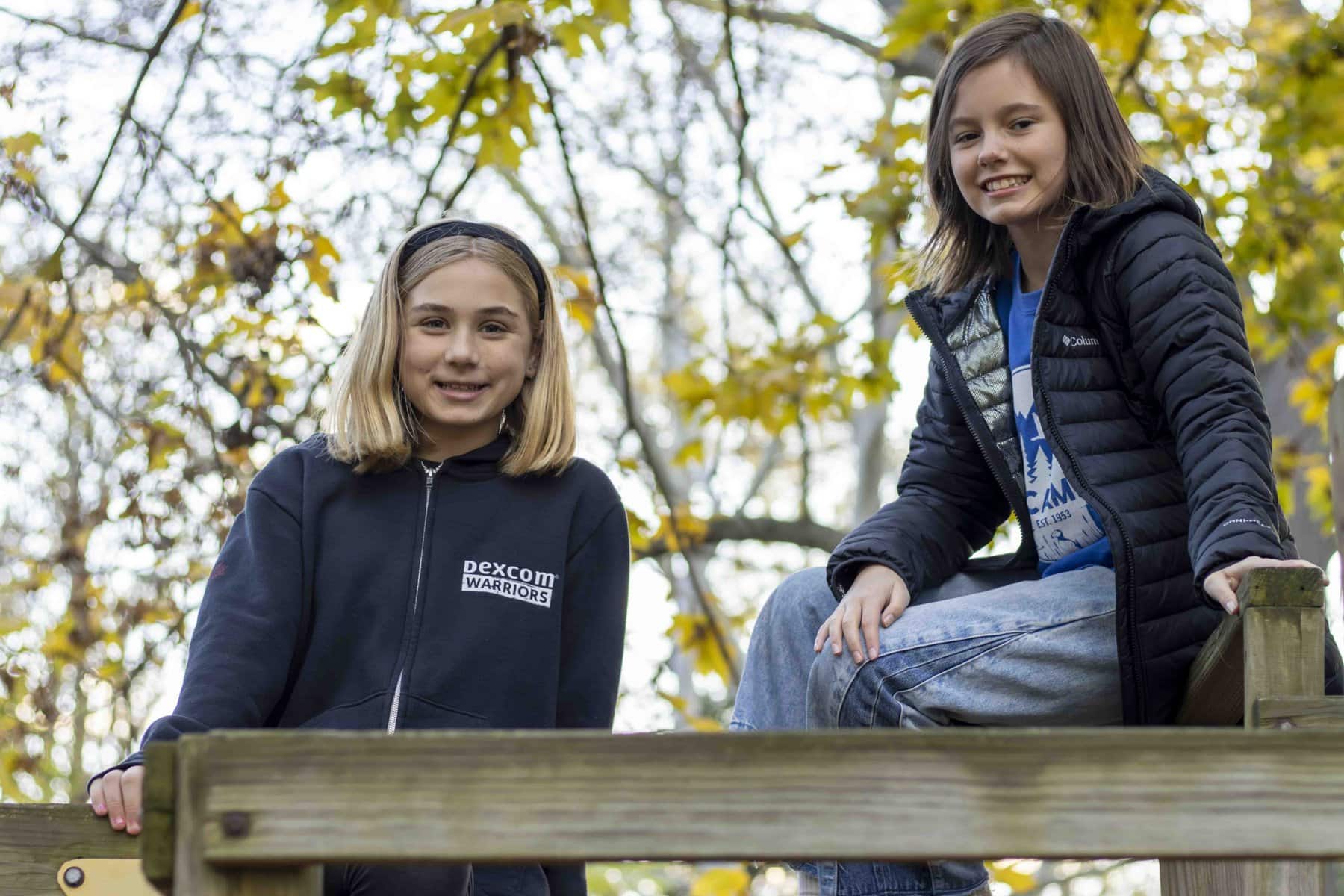Some people just don’t get it.
In their work to increase research and awareness of juvenile diabetes, 11-year old Greta Sobol and 12-year-old Maya Webster hear some questions more than others.
One of the more common assumptions people make is that people with juvenile diabetes can’t have sugar, Maya says.
“Or junk food,” adds Greta.
The two youngsters, both of whom live with Type 1 diabetes, say that’s not the case.
November marks Diabetes Awareness Month in Canada every year and Greta and Maya are keen for people to learn more about it.
Managing Type 1 diabetes, also called juvenile onset, is more about balancing what you eat with how much insulin you take.
“A lot of people I know mix up Type 1 and Type 2,” Maya said.
“Type 1 is an autoimmune disease, so you can’t help it,” she said.
Or, as national advocacy organization Diabetes Canada puts it, the “body’s immune system destroys the cells that make insulin.”
“Type 2 diabetes is a disease in which your body cannot make enough insulin, or your body does not properly use the insulin it makes,” the organization says on its website.
It is caused by a combination of genetics and lifestyle choices.
In either case, the disease is treated with synthetic insulin, which is delivered to the body through an injection device.
In non-diabetics, insulin is a hormone produced in the pancreas, which allows the body to process sugar.
Some Type 2 diabetics can manage their blood sugar with exercise, healthy food choices and medications, without having to rely on insulin injections.
It is usually diagnosed in adulthood, whereas juvenile diabetes is generally found in kids – hence the name.
“Also, Type 2 is way more common,” Greta said.
Maya has been living with diabetes since she was about two and Greta since she was nine.
“Our moms met on Facebook when I was first diagnosed,” Greta said.
Ann Deuerlein, Greta’s mom, explained she reached out to Christi Webster through a common friend and, a year and a half later, their daughters continue to share a “loving friendship.”
Deuerlein says Webster has shared a wealth of knowledge with her about managing diabetes since Greta was first diagnosed in April of last year.
Maya says she does not have many friends at school who can relate to her experience with diabetes, but Greta gets it.
Both now use Omnipod automated injection devices, but they both started with injection therapy, taking five needles a day.
Omnipods, on the other hand, affix to the skin with an adhesive tape and can be remotely controlled with a cellphone.
The devices are inserted once every three days.
“I used to cry so much, when I had to take my nighttime dose,” Greta said. “I would scream and kick down doors.”
Deuerlein recalled that her daughter would get so mad about having to take needles she’d “scream that she hated me.”
The family ended up putting Greta in boxing lessons so she could vent her frustrations.
Both youngsters agreed that one of the more challenging parts of growing up with diabetes is managing physical activity.
Maya, a basketball player, says she once had to sit out of gym class because her blood sugar was low.
Low blood sugar levels can be especially dangerous, she says, because they can “lead to diabetic coma and death.”
On its website, the Juvenile Diabetes Research Foundation explains that some types of exercise can cause blood sugar to spike, while others cause it to drop.
Low blood sugar can also be caused by excessive amounts of insulin.
It’s frustrating to be pulled aside in the middle of basketball practice to deal with dropping blood sugar, Maya said.
Maya said she feels empty when she’s low and Greta said she gets irritable.
“It’s really frustrating, because I don’t mean to be rude,” Greta said.
Other symptoms of low blood sugar include trembling, sweating, confusion and dizziness.
Low blood sugar, however, can be fixed quickly with a glass of juice, which is full of simple sugars that the body can use up quickly.
Low blood sugar are not just caused by activity, though, and high blood sugar comes with a different set of risks.
Webster said she and her family had quite a scare with Maya when she was about four.
At the time, Maya was testing her blood sugar with a lancer and a glucose metre, but today, she uses a continuous monitor made by Dexcom.
Her new device continuously tracks her sugar and delivers the readings to her phone.
“Her pump (Omnipod) came out one morning, she was getting ready for school. We didn’t know,” Webster said.
Her father checked the Omnipod to make sure it was working and didn’t notice anything wrong, Webster said.
Her blood sugar started rising in the car on the way to school and in less than two hours Maya was at the hospital with a serious complication known as ketoacidosis.
Similarly, high blood sugar can also result in a coma, though Maya’s symptoms did not progress that far.
Webster said her daughter was throwing up and very lethargic at the hospital.
“Seeing how fast it all happened. It was pretty scary,” she said.
According to the Juvenile Diabetes Research Foundation, other symptoms of ketoacidosis include excessive thirst and urination, fatigue, fruity smelling breath and nausea.
Maya suggests people read up on diabetes at the Juvenile Diabetes Research Foundation’s website, jdrf.ca, to learn more.










